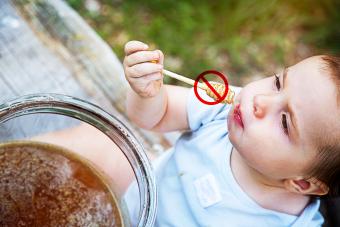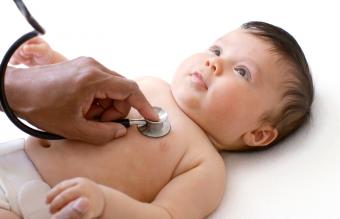
The umbilical cord serves a crucial role for an unborn infant during its time in the uterus, and in the days and weeks after birth, infant cord care is essential.
The Umbilical Cord: What Happens After it is Cut
The umbilical cord provides nourishment to the unborn infant throughout the duration of pregnancy. Once the infant has been delivered, the cord is clamped and cut, resulting in the presence of a stump. Over time, the stump becomes what is later recognized as the naval or 'belly button'.
The cord is cut, and a two to three centimeter stump is left. It is cut using sterile scissors, which should reduce any risk of infection to the remaining stump. Although scissors are used to sever the cord from the placenta, due to the absence of nerve endings no pain or discomfort is felt by the infant. The cord will fall off entirely anywhere between five and fifteen days following the birth. Over that period the appearance of the cord changes dramatically from a healthy looking cord to a brownish-black shrivelled article which drops off because the segment attaching it to the umbilicus has died. Once it has fallen off, the area may appear slightly raw again. In some cases the area may bleed slightly. This is nothing to worry about and is perfectly normal.
Infant Cord Care: Recommended Practice for Parents
For all first time parents, the initial site of the cut cord can be an upsetting one as the segment of cord which remains appears white and shiny, a different color to the surrounding skin.. It is essential that parents understand and practice adequate infant cord care immediately following birth. Infant cord care is simple, providing basic common sense measures are maintained:
- Keeping dry - It is a good idea to keep the cord dry wherever possible until it drops off. It is a common misconception that newborn infants must be bathed daily. This is not the case, and a simple 'top and tail' wash will suffice in the first week after birth. This can be undertaken using a small bowl or sink full of water and a cloth or cotton wool. This allows the cord not to be soaked in water which may soften it and disrupt the healing/drying process.
- Clean the cord separately - This can be done using lukewarm sterile water and cotton. It has been concluded that water is a good, if not better cleansing product as other manufactured ones.
- Contamination with bodily waste - There is a possibility that the cord can come into contact with feces and urine from the diaper. To avoid this, turn the waist of the diaper (if using disposable) downward, allowing the cord to be free outside of the diaper. Allowing exposure to the air will assist in a quicker healing process. If at any time the cord becomes covered in fecal matter, it is advisable to clean it with a light dilution of soapy water as the feces can be oily in consistency and therefore difficult to remove with water on its own.
- Avoid using baby care products - It is fine to use baby care products such as powder and massage oil on the infant's trunk, arms and legs. It is however essential to avoid allowing the products to get too near the cord. If a build up of the product accumulates, it can be difficult to remove and could create a need to scrub around the cord stump to remove the product. This action can cause unnecessary trauma to the cord.
- Let nature take its course - Near the time when the cord is about to fall off, many parents are tempted to manually remove it themselves. This is not advisable as it can cause trauma to the area around the stump and may even result it bleeding and possible infection.
When to Seek Advice
For most parents and their newborn infants, the eventual loss of the cord is a problem-free event. In many cases the cord falls off without the parents even being aware it happened. In some cases the cord can become infected, particularly if careful cord care has not been followed. The following warning signs may indicate the possible presence of infection:
- General redness - it may be apparent that the cord area is becoming red or changing in color. In serious cases of infection the cord stump may be markedly swollen also.
- Fever - the infant may 'spike' a higher than normal body temperature which is difficult to reduce. Initial signs of this may be increased crying and difficulty settling.
- Presence of pus - the cord site may ooze yellow colored pus which has previously not been noticed.
- Bleeding - with or without the pus, the cord may bleed.
- Foul odor - usually coinciding with the presence of pus there may be a prominent unpleasant odor from the cord site.
If any of the above changes occur, it is crucial that the midwife or doctor is consulted. Infections do not go away untreated: therefore, the sooner advice and treatment is sought, the quicker the infection can be healed.







